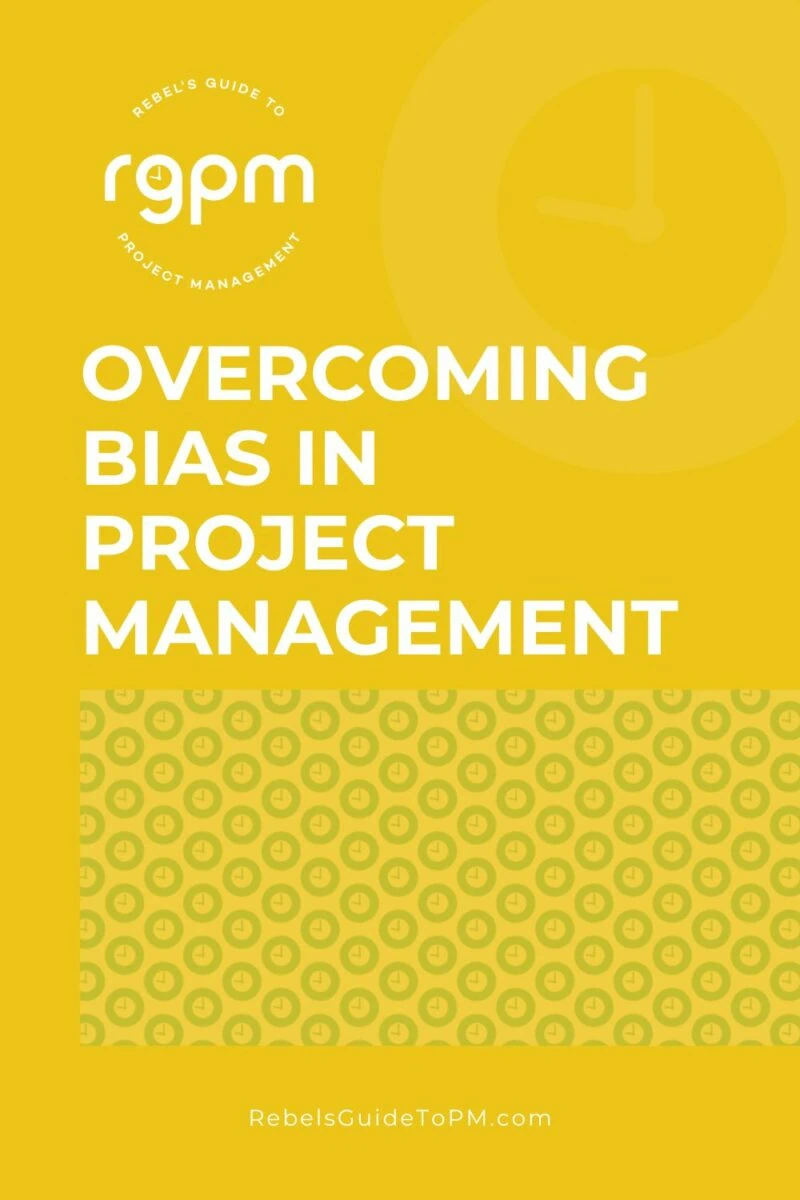Overcoming bias in project management
This is a guest post by Roland Hoffmann.
Are you biased as a project manager? You might be surprised! In this article we’ll talk about the different types of bias in project management.

A project manager is the linchpin of a successful project. Her leadership and guidance is of paramount importance during planning and execution.
Since good decision-making is critical for good leadership and guidance, project managers need to know how heuristics (mental disposition) and biases (personal inclinations) influence a project manager’s decisions.
Let’s look at what heuristics and biases exist in management and what we can do to reduce their impact on our projects.
What are heuristics?
Heuristics are mental shortcuts and rules-of-thumb that allow you to make decisions without having to think through all the details every time.
Heuristics are natural cognitive functions with risky implications for project managers. What appears as common sense is actually irrational decision-making, which can happen daily in a project manager’s life and limit her success.
Heuristics are useful because they reduce mental overload, but they can lead to bias.
Effective project management training addresses these natural human variables to enhance traditional project management science.
Anchoring bias in project management
Anchoring occurs when a project manager adjusts an estimate closer to a number she previously heard or saw.
For example, she may not schedule the necessary two months for a task because the technician said, “Two weeks should do it!”
Even if the project manager disbelieves the two-week estimate, she would be unlikely to stick to her two-month plan. If the technician had said, “We will need at least four months,” the project manager would likely schedule more than two months.
Can you see how this might happen in project scheduling meetings? That’s one reason why it is so important to capture good meeting minutes.

Availability bias in project management
The availability heuristic is another irrational intuition, which implies that easily remembered information is most important.
For example, if the project manager saw a car crash in the morning, she may later decide to pay for better insurance coverage for her team, even though the statistical likelihood of a car crash has not changed.
The representativeness heuristic
Finally, the representativeness heuristic can also affect projects. This occurs when people use representative association rather than factual analysis.
Here’s an example of the representativeness heuristic. A project manager may not hire a genius who interviewed in a hoodie, because she often sees a group of skateboarders in hoodies playing during working hours.
The hoodie unconsciously represents bad work habits, leading the project manager to not hire the candidate, even though she would have hired the candidate, if she only evaluated the candidate’s test results and qualifications.
Read next: 10 Killer Interview Questions for Project Managers

Framing bias in project management
Beyond these heuristics problems, project managers should learn to recognize other types of bias.
A framing bias skews analytical objectivity. Another well-known experiment asked subjects to choose between saving 200 of 600 patients or losing two-thirds of the 600 patients.
Naturally, almost everyone saved the 200 patients – even though the choices are mathematically identical. This bias may cause a project manager to under-charge a change because the sponsor framed the request accordingly.

Confirmation bias in project management
The confirmation bias prompts people to agree with evidence that confirms their prior decisions. Here’s an example of confirmation bias: a smoker may trust statistically irrelevant studies that conclude that cigarettes are not harmful.
A project manager with a confirmation bias could use a questionable report to justify polluting the environment, since she actually only wants confirmation that the containment cost she missed in her budget is unnecessary.
Belief bias in project management
Finally, a project manager should heed the belief bias.
It distorts reality with long-standing beliefs that act as powerful, silent motivators. For instance, a project manager with a doctorate may ignore the excellent advice of a laborer if she believes that college education is a prerequisite for good advice, or a superstitious project manager may delay the project’s completion to avoid acceptance on Friday the 13th.

How to overcome bias
Humans are normally unaware of biases and heuristics, and awareness requires training, skill, and experience. Project managers are particularly susceptible to consequences, because projects must succeed the first time and offer limited learning opportunity that does not end in failure.
Role play can help. For example, a trainer could assign stakeholder roles and secret objectives to students on a project management course who then complete a tense price negotiation.
Afterwards, in a second exercise, students conduct a rigorous stakeholder analysis mitigates and realize that the tension was the result of anchoring heuristics.
To give another example, the project management trainer could demonstrate the framing bias with a procurement drill that has different pricing anchors, or discuss the duration variances from two distinctly-framed schedule instructions.
This would convey formal procurement practices and schedule management concepts, but also exemplify the results of human nature. The result would instantly create experience and benefit real-world project scenarios.
Ask for and listen to feedback to help you uncover your own personal biases and how they could affect your project.
Ultimately, project managers must learn how heuristics and biases can affect decisions through experience. The goal is not for you to question every action and decision, but one who makes critical decisions with the use of due diligence to avoid human shortcomings.
The performance improvements will bring real benefits to the individual and the organization.
